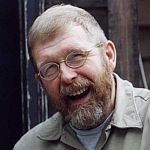 (HOST) Commentator Willem Lange has some reflections on the winter solstice, but it’s almost too dark to see them.
(HOST) Commentator Willem Lange has some reflections on the winter solstice, but it’s almost too dark to see them.
(LANGE) Miss Bennett taught eighth-grade science in our junior high school. The most advanced technology in those days was an overhead projector, so she devised her own visual aids. The most spectacular thing she ever did was demonstrate the volatility of dust particles in colloidal suspension by blowing the lid off an Ovaltine can and shattering the light fixture above her head.
But I remember most at this time of the year her demonstration of the reason for varying lengths of days throughout the year. She did it the day of the winter solstice. With a basketball for the sun and a tennis ball pierced through by a wooden stick from a Sugar Daddy, she revolved and rotated simultaneously. She drew a spot on the tennis ball to show where we lived, about halfway from the Equator to the North Pole. Then she tipped the stick to about thirteen degrees, and we could see not only why the days of our year differed in length, but also that we were that day about as deeply in the dark as we’d ever be.
"Now," she said, "look up here at the North Pole. It’s in the dark, just as we are, but when I rotate the tennis ball, you can see that the sunlight doesn’t hit it at all. Right now it’s dark up there right around the clock, and the sun won’t begin to show again for several weeks.
"The wind at the North Pole flows in a circle, and right now, with no sunlight to warm it, it’s getting colder and colder. Cold air is heavier than warm air, so it sinks as it cools, and spreads out just like pancake batter when you pour it onto the griddle. When it spreads wide enough, the edges of it will catch on the winds that bring our weather. What do you think that weather is going to feel like?"
"Cold!" we cheered as one, with visions of sleds and toboggans dancing in our heads.
"That’s right," she said. "The coldest weather will be about five weeks behind the shortest days. But there’s bad news, too. Because the earth’s orbit is closest to the sun during our winter here in the northern hemisphere, it’s moving faster. That means our winter is just a little shorter than our summer, so you’d better get out there and enjoy it while you can."
Somehow, as the years have accrued since those days in Miss Bennett’s General Science class, and I have long since put away my sled, the poles of my enthusiasms have become reversed, and what she called bad news now seems good… terrific… delightful… and I look forward to the lengthening days with the same enthusiasm we once felt as we rubbed jelly jar wax onto our wooden skis, neat’s-foot oil into our boots, and Bag Balm on our chapped cheeks.
This is Willem Lange in East Montpelier, and I gotta get back to work.